| 1. |
Cocoons
are placed in a box for boiling (30 minutes). |
| 2. |
Silkworms
are removed. |
| 3. |
The
silk is wrapped on a small ring. Ten cocoons are
needed for this. |
| 4. |
This
process is repeated ten times. |
| 5. |
The
small pieces are then stretched onto a bigger ring.
The same procedure is repeated seven times. The
silk web is made larger each time. |
| 6. |
The
silk is dried out and the large piece is separated
and loosened by hand to form a silk quilt. |
Some
seven thousand cocoons are used to make one quilt. This
kind of quilt is very soft, light and comfortable and
is suitable for all seasons. A similar process is used
in the production of silk wadding for padding used in
winter clothes.
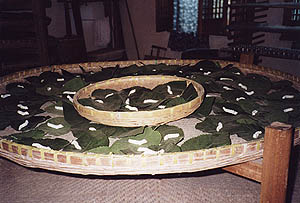
Silkworms
and mulberry leaves. Photo: Adrienne Cobby.
|

Twin
silk worms. Photo: Adrienne Cobby. |

Twin
silk worm cocoons are used for quilts. While they
are wet they are stretched onto a frame.
Photo: Adrienne Cobby. |
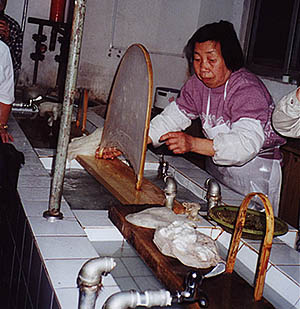
Stretching
the silk. Photo: Adrienne Cobby. |
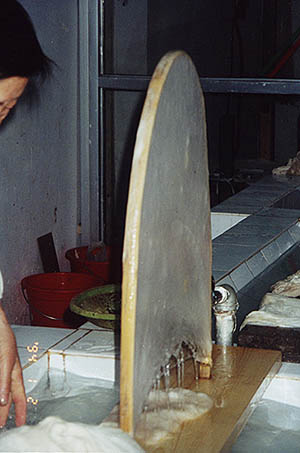
Stretched
onto a larger frame x10 and dried. Photo: Adrienne
Cobby. |
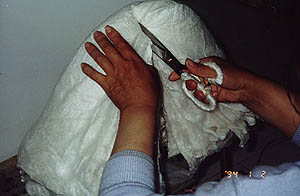
The
dried layers are cut open. Photo: Adrienne Cobby. |
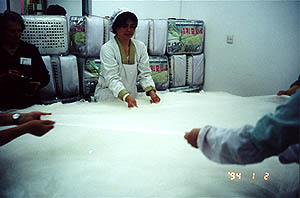
The
silk is separated into layers and stretched by hand
to fit the quilt size. Photo: Adrienne Cobby. |
|